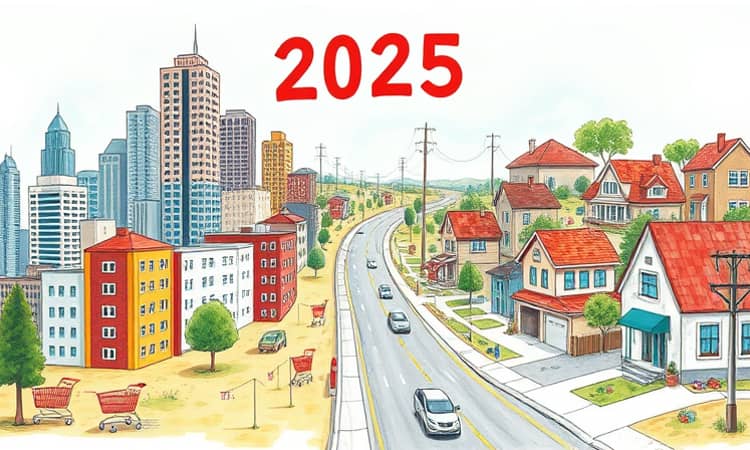As 2025 unfolds, Americans face an unprecedented economic landscape where everyday essentials demand more of our time, income, and peace of mind. In this article, we explore how families and individuals can navigate the complex terrain of modern expenses and build sustainable budgets for a stable future.
Introduction: The Rising Cost of Living in 2025
In 2025, the cost of living has reached record highs in 2025, significantly stretching household budgets across the nation. From skyrocketing home prices to grocery bills that outpace paychecks, many Americans now find themselves making tough choices daily. The gap between wages and expenses is growing, forcing families to rethink every dollar they earn.
For countless households, the pressure of affording rent, utilities, and healthcare simultaneously has become a harsh reality. Understanding the breakdown of these expenses—and learning to adapt—can mean the difference between financial resilience and constant stress.
Breaking Down Major Expenses
To budget effectively, it’s crucial to see where your money goes each month. Below is a clear overview of the primary categories consuming household incomes in 2025:
- Housing remains the largest expense: The average new home sale price is $511,000, while one-bedroom city center rent averages $1,733 per month and three-bedroom units climb above $2,800.
- Utilities add unexpected burdens: Americans pay about $370 per month, though some states report indices below or above this average.
- Transportation costs hover near 16% of household budgets, totaling nearly $9,826 annually for fuel, insurance, and maintenance.
- Food expenditures approach luxury status: Families spend over $600 monthly on groceries and dining out, with fast-food running $18–$20 per meal.
- Healthcare and childcare bills climb: Annual medical costs average $5,177, while childcare remains a hidden yet critical budget line in expensive regions.
Regional Variations: Where You Live Matters
Geography can make or break a budget. Coastal and metro areas remain the priciest, while the South and Midwest offer more breathing room. Consider these indices:
Living in California or New York demands incomes far above the national median just to cover basics. Conversely, relocation to states like Mississippi or Missouri can reduce the burden significantly, offering families a fresh start with more disposable income.
Why Costs Continue to Climb
Several factors drive the relentless rise in expenses:
Housing shortage intensifies rent burdens. With inventory scarce and borrowing costs high, developers build fewer units, keeping prices elevated. Meanwhile, inflation pushes grocery, utility, and fuel prices upward.
Wage growth lags behind inflation, meaning paychecks can’t keep up with price increases. This imbalance creates a widening gap between earnings and necessary spending, forcing many to take on extra work or delay financial milestones like homeownership.
Regional disparities exacerbate these trends, as metropolitan centers concentrate wealth and demand, leaving rural areas in a different economic orbit. Understanding local dynamics is key to making informed decisions.
How Families Adapt
Americans are resourceful. In high-cost areas, many households now rely on dual incomes to meet basic needs, rethinking work-life balance and career paths. Some parents alternate remote work days to manage childcare, while others pool resources in multigenerational homes.
Relocation has become a viable strategy: moving from pricey urban centers to affordable regions can slash monthly expenses by hundreds or thousands of dollars. Yet this shift isn’t just financial—it’s cultural, requiring adjustments in lifestyle, community, and opportunity access.
Despite these challenges, stories of resilience abound: neighbors swapping produce, communities organizing carpool co-ops, and individuals using side hustles to bridge budget gaps. These innovations illustrate the power of collective effort when personal budgets are stretched thin.
Budgeting for Reality: Practical Tips
- Track every dollar: Use apps or ledgers to record housing, utilities, food, healthcare, transportation, insurance, and debt payments.
- Build an emergency fund: Aim for 3–6 months of expenses to weather unexpected crises without derailing long-term goals.
- Factor in hidden costs: Childcare, local taxes, and maintenance can add thousands annually—budget proactively.
- Compare cost-of-living indices: Before accepting jobs or relocating, research local expenses versus salary offers.
- Embrace shared living: Roommates or multigenerational setups can reduce housing costs without sacrificing community.
- Prioritize debt reduction: High-interest loans and credit card balances erode budgets; tackle these first when possible.
Looking Ahead: Building Financial Resilience
As the cost of living continues its upward trajectory, proactive planning becomes essential. By understanding expense breakdowns, embracing adaptable lifestyles, and employing disciplined budgeting, individuals and families can regain control over their finances.
Remember: budgeting isn’t about deprivation—it’s a tool for empowerment. With careful strategy and community support, even the highest price tags can become manageable challenges rather than insurmountable obstacles. In 2025 and beyond, the goal remains clear: charting a path toward lasting security and peace of mind in an ever-changing economy.














